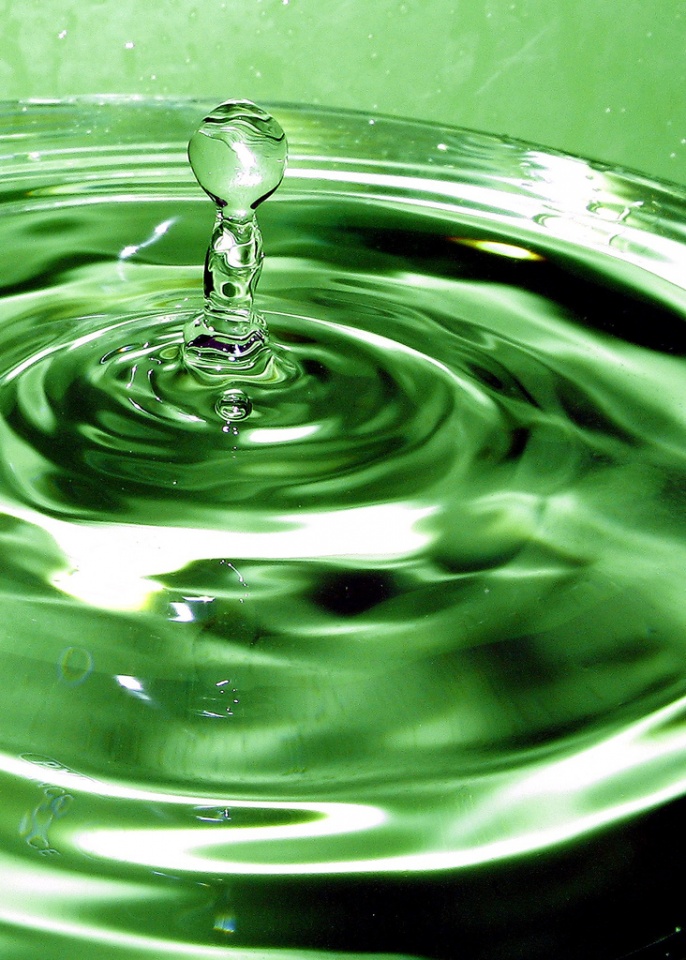
Photo by C Lansley
It is a well-known fact that Canada is one of the most water-consuming countries in the world. Most of the consumption can be attributed to our highly demanding industry, but common households share in the responsibility.
However, saving water is not difficult. In fact, there are many little things you can do that make a big difference. While some might seem obvious, other will surprise you. Today, we begin a short series of articles dedicated to decreasing water usage at home. Get inspired to make a difference!
Of all developed countries, Canada ranks second only to the U.S. in terms of highest per capita water use. To maintain our lifestyle, we spend about 1.5 million cubic metres or approximately 4,400 litres-per-capita-per-day (lcd) of water (based on total water consumption divided by population). That is 65 per cent above the Organization for Economic Cooperation and Development (OECD) guidelines!
Consider this: the amount of fresh water needed for one person to survive is approximately 5 litres per day. To meet the requirements for sanitation, food preparation and daily hygiene, 60-80 lcd are required. However, the average Canadian uses over 300 litres a day in domestic water use alone! So where does the rest of the water go? How can we prevent wasting water in our households?
Let's begin with some basics:
1. Fix any hidden water leaks
The number-one thing to do is to check for possible water leaks. If your property is metered, the easiest way to do this is to read your water meter and write down the number. Afterwards, stop using water completely. Check the meter again after a few hours – if it has moved, there's a leak somewhere and it should be fixed.
A significant amount of water could be leaking from your toilet. To see whether this is the case, put a little food coloring in your toilet tank. Don't flush. If the color begins to appear in the bowl within 30 minutes (without flushing), there has to be a leak. Don't worry about repair costs; most replacement parts are cheap and easy to install.
If you have a garden, don't forget about pipes, hoses, faucets, and couplings. Leaks outside the house are often overlooked since they're not as visible. However, they can be just as wasteful as leaks indoors. Check for them frequently and use hose washers at spigots and hose connections to prevent leaks.
2. Put plastic bottles in your toilet tank
To reduce the amount of waste water, put some sand or pebbles inside each of the two plastic bottles to keep them submerged. Fill the bottles with water, seal them, and put them in your toilet tank. Be careful to put them away from the operating mechanism. This little trick may save more than 30 litres of water per day.
However, you need to make sure that at least 10 liters of water remains in the tank —otherwise, the toilet might not flush properly and users will hold the lever down too long or do additional flushes to deal with waste. You might consider buying an adjustable toilet flapper, which enables you to adjust the flush rate to an appropriate setting.
Thinking of installing of a brand new toilet? Consider buying a "low flush" one. These toilets can save 70% of water used for flushing and cut overall indoor water use by about 30%.
3. Only use your dishwasher and clothes washer for full loads
It might seem obvious, but many people just don't like to hold off washing their dishes or clothes. However, automatic dishwashers and clothes washers should be fully loaded for optimum water usage. Avoiding pre-rinsing dishes saves water greatly as well – even most dishwashing soap makers recommend skipping this step.
As for the clothes washers, don't use the permanent press cycle, as it uses an added 20 litres for the extra rinse. Remember to adjust water usage for partial loads!
Old washing machines should be replaced as soon as possible. New, high-efficiency washers use much less water and energy per load. Front-load washers tend to be much more water-saving, so keep that in mind while looking for a new washing machine.
We often take fresh water for granted, but at some point, our needless wasting of water resources might turn against us. Fortunately, there are many small things like these you can do to make a big difference when it comes to water conservation. Stay tuned for more tips!


